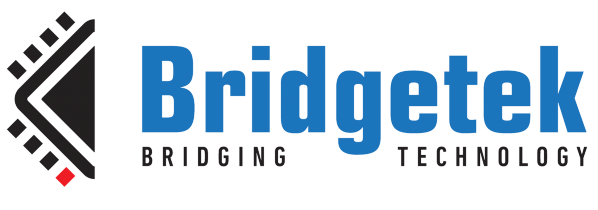721
Discussion - EVE / Re: problem regarding eve2 display.
« on: April 25, 2019, 02:04:18 PM »
Hello,
Can you provide a SPI trace of communication from your MCU to the EVE IC?
We have some application notes geared towards writing a libraries for MCUs. The first covers how the low level transfers are structured between and MCU (in this example a PIC) and the EVE IC. The second covers how to create an EVE Library to interface to the MCU. And finally the last one covers some EVE examples for PIC MCUs:
http://brtchip.com/wp-content/uploads/Support/Documentation/Application_Notes/ICs/EVE/BRT-AN-006-FT81x-Simple-PIC-Example.pdf
http://brtchip.com/wp-content/uploads/Support/Documentation/Application_Notes/ICs/EVE/BRT_AN_008_FT81x_Creating_a_Simple_Library_For_PIC_MCU.pdf
http://brtchip.com/wp-content/uploads/Support/Documentation/Application_Notes/ICs/EVE/BRT_AN_014_FT81X_Simple_PIC_Library_Examples.pdf
The principals described in these Applications Notes can be used to implement solutions for a wide variety of MCUs.
Best Regards,
BRT Community
Can you provide a SPI trace of communication from your MCU to the EVE IC?
We have some application notes geared towards writing a libraries for MCUs. The first covers how the low level transfers are structured between and MCU (in this example a PIC) and the EVE IC. The second covers how to create an EVE Library to interface to the MCU. And finally the last one covers some EVE examples for PIC MCUs:
http://brtchip.com/wp-content/uploads/Support/Documentation/Application_Notes/ICs/EVE/BRT-AN-006-FT81x-Simple-PIC-Example.pdf
http://brtchip.com/wp-content/uploads/Support/Documentation/Application_Notes/ICs/EVE/BRT_AN_008_FT81x_Creating_a_Simple_Library_For_PIC_MCU.pdf
http://brtchip.com/wp-content/uploads/Support/Documentation/Application_Notes/ICs/EVE/BRT_AN_014_FT81X_Simple_PIC_Library_Examples.pdf
The principals described in these Applications Notes can be used to implement solutions for a wide variety of MCUs.
Best Regards,
BRT Community


